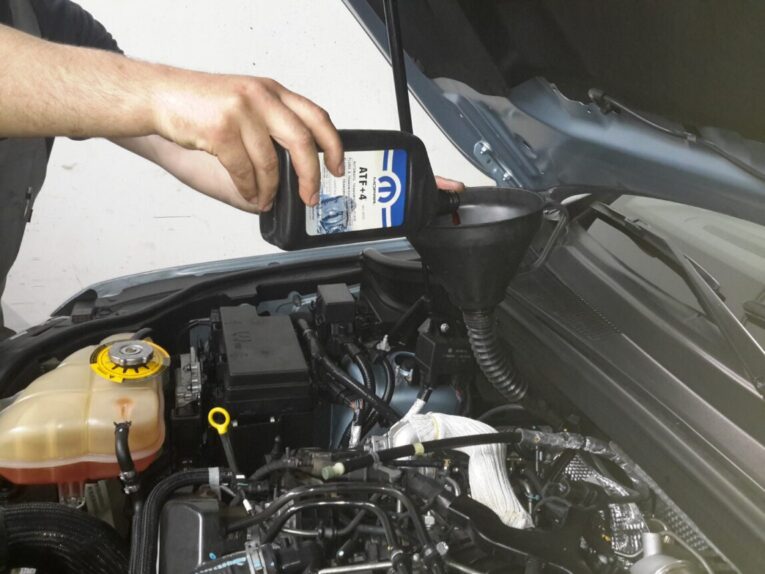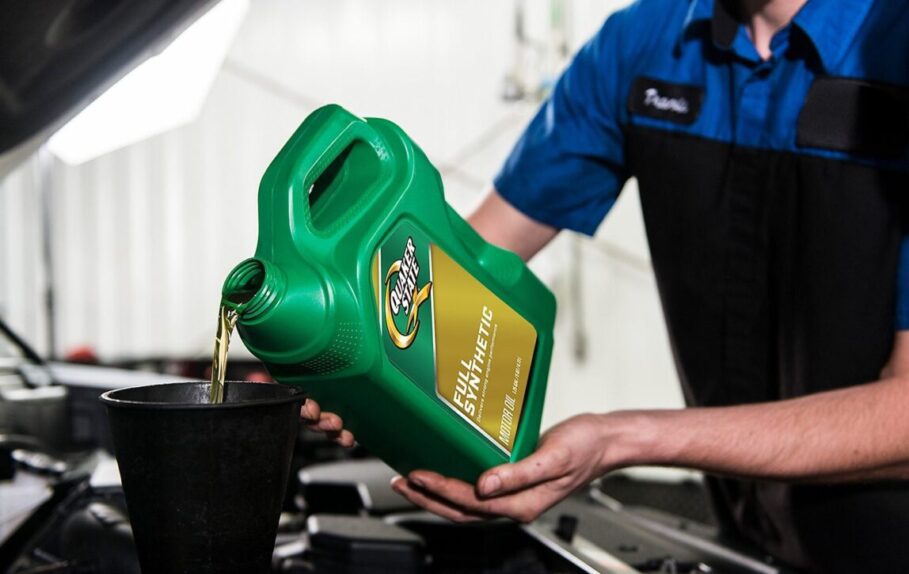Table Of Contents
- 1 Brief explanation of why resetting the oil life is important
- 2 Overview of the Jeep Wrangler 2017 and its oil life monitoring system
- 3 Understanding the Oil Life Monitoring System of Jeep Wrangler 2017
- 4 Steps to Reset Oil Life on Jeep Wrangler 2017
- 5 Tips and Tricks for Maintaining Your Jeep Wrangler 2017
- 6 How To Reset Oil Life On Jeep Wrangler 2017: FAQ
- 6.1 Q: Can I reset the oil life monitoring system without changing the oil?
- 6.2 Q: How often should I reset the oil life monitoring system on my Jeep Wrangler 2017?
- 6.3 Q: Can I reset the oil life monitoring system using the Uconnect infotainment system?
- 6.4 Q: What factors affect oil life?
- 6.5 Q: How can I tell when it’s time to change my Jeep Wrangler’s oil?
- 6.6 Q: Can I reset the oil life monitoring system if the message is not displayed on the instrument cluster?
- 7 How To Reset Oil Life On Jeep Wrangler 2017: Conclusion
Brief explanation of why resetting the oil life is important
Resetting the oil life monitoring system is an essential part of maintaining a Jeep Wrangler 2017. This system is designed to monitor the condition of the engine oil and alert the driver when it’s time for an oil change. Over time, engine oil accumulates debris, dirt, and other contaminants that can reduce its effectiveness. When this happens, the oil life monitoring system will notify the driver that the oil needs to be changed.
Ignoring the criticality of resetting the oil life monitoring system after an oil change in your Jeep Wrangler 2017 could lead to a perpetuation of old oil change intervals, creating a confusing and misleading situation. Prolonged usage of such ineffective oil may inflict damage to your vehicle’s engine, and it is not a desirable outcome. Therefore, it’s crucial to reset the system after every oil change to ensure your vehicle is functioning at peak performance.
Resetting the oil life monitoring system ensures that the system accurately monitors the condition of the engine oil and alerts the driver when it’s time for the next oil change. By doing so, the driver can maintain the optimal performance and longevity of their Jeep Wrangler 2017.
How To Reset Oil Life On Jeep Wrangler 2017: Review
User Opinion on the subject:
“Oil Life Reset:
1. Without pushing the brake pedal, push and release the
ENGINE START/STOP button and place the ignition to
the ON/RUN position (do not start the engine).
2. Navigate to Oil Life submenu in Vehicle Info in the
instrument cluster display.
3. Push and hold the OK button until the gauge resets to
100%.”
Overview of the Jeep Wrangler 2017 and its oil life monitoring system
The Jeep Wrangler 2017, an SUV of unparalleled ruggedness and capability, has a sophisticated oil life monitoring system that allows drivers to stay abreast of their engine oil’s status and recognize when it’s time for an oil change. With its cutting-edge oil life monitoring system, the Jeep Wrangler 2017 puts drivers in the driver’s seat of their vehicle’s oil maintenance, providing them with the tools and information they need to ensure their Jeep is always running at peak performance.
The oil life monitoring system uses a variety of sensors and algorithms to calculate the remaining life of the engine oil. It takes into account a number of factors, such as the engine’s operating conditions, driving style, and the type of oil that’s being used. Based on these inputs, the system calculates the remaining oil life and displays it on the instrument cluster.
The Jeep Wrangler 2017 also comes equipped with a variety of other features to help drivers maintain their vehicle’s health. These include a maintenance reminder system that notifies the driver when it’s time for other routine maintenance tasks, such as tire rotations and brake inspections.
Overall, the Jeep Wrangler 2017’s oil life monitoring system is a valuable tool for maintaining the health and longevity of the vehicle’s engine. By keeping track of the oil’s condition and changing it at the appropriate intervals, drivers can ensure that their Jeep Wrangler 2017 stays in top condition for years to come.
Understanding the Oil Life Monitoring System of Jeep Wrangler 2017
Explanation of how the oil life monitoring system works in the Jeep Wrangler 2017
The oil life monitoring system in the Jeep Wrangler 2017 is designed to help vehicle owners determine when it’s time for an oil change. The system uses various sensors and algorithms to analyze data such as engine revolutions, operating temperature, and vehicle speed to determine the condition of the oil.

The system takes into account various factors that affect oil life, including driving conditions and vehicle usage patterns. For example, if you frequently drive in stop-and-go traffic or drive in dusty conditions, the system will adjust the oil change interval accordingly.
The oil life monitoring system is designed to be more accurate than traditional mileage-based oil change schedules. This means that you can potentially save money by not changing your oil as frequently as you would with a mileage-based schedule, while still maintaining the health of your engine.
When the system determines that it’s time for an oil change, a notification will appear on the instrument cluster. It’s important to reset the system after an oil change to ensure that the system can accurately monitor the condition of the new oil.
Discussion of the factors that affect oil life and how they are taken into account by the system of Jeep Wrangler 2017
The oil life monitoring system found in the Jeep Wrangler 2017 is a complex and intricate mechanism that factors in a myriad of elements that can influence the longevity of the engine oil. These elements can range from the sheer number of engine revolutions to the sweltering engine temperature, from the operating conditions to the kind of oil utilized. The system is not one to be underestimated, as it takes into account various factors that can have a significant impact on the health and longevity of the engine oil.
The system uses a sophisticated algorithm to analyze these factors and calculate the remaining oil life. This allows the vehicle to optimize the performance and longevity of the engine oil, which in turn helps to prolong the life of the engine.
For example, the system takes into account the number of engine revolutions to determine how hard the engine is working. If the engine is working hard, it will cause more wear and tear on the engine oil, reducing its useful life. By tracking the number of engine revolutions, the system can adjust the remaining oil life accordingly.
Similarly, the system also considers the engine temperature. If the engine is running too hot, it can cause the oil to break down more quickly, reducing its effectiveness. By monitoring the engine temperature, the system can adjust the remaining oil life accordingly, ensuring that the oil is changed before it becomes ineffective.
Overall, the oil life monitoring system in the Jeep Wrangler 2017 is designed to take into account all of the factors that affect oil life and provide the driver with an accurate estimate of the remaining oil life. By following this estimate and changing the oil when necessary, drivers can help to ensure that their engine runs smoothly and efficiently for years to come.
Explanation of how the system calculates oil life remaining of Jeep Wrangler 2017
In the Jeep Wrangler 2017, the oil life monitoring system uses a sophisticated algorithm to calculate the remaining oil life based on various factors. The system takes into account a number of variables, including the number of engine revolutions, the number of cold starts, the engine temperature, the oil temperature, and the engine load.
The system uses this data to estimate the quality of the oil and how much useful life it has left. It then calculates the remaining oil life and displays it on the instrument cluster or infotainment system.

The algorithm is designed to provide a reliable estimate of oil life remaining, but it’s important to note that it’s still an estimate. The actual remaining oil life can vary depending on a variety of factors, including driving conditions, weather, and the quality of the oil used.
To ensure the most accurate reading, it’s recommended to reset the oil life monitoring system after each oil change and to follow the recommended maintenance schedule provided by the manufacturer.
Steps to Reset Oil Life on Jeep Wrangler 2017
Step-by-step instructions on how to reset the oil life monitoring system on the Jeep Wrangler 2017
Resetting the oil life monitoring system on the Jeep Wrangler 2017 is a simple process that can be done in just a few steps. Here is a step-by-step guide on how to reset the system:
- Start by turning the ignition key to the “on” position without starting the engine.
- Use the arrow buttons on the left-hand side of the steering wheel to navigate to the “Settings” menu on the instrument cluster.
- Select “Vehicle Info” from the list of options and press the “OK” button.
- Use the arrow buttons again to select “Oil Life” and press “OK” to confirm.
- Select “Reset” from the menu and press “OK” to confirm that you want to reset the oil life monitoring system.
- The system will ask you to confirm the reset. Select “Yes” and press “OK”.
- The oil life monitoring system has now been reset, and the remaining oil life will be set to 100%.
Discussion of the different methods for resetting the system, including using the instrument cluster and using the Uconnect infotainment system
There are two main methods for resetting the oil life monitoring system on the Jeep Wrangler 2017, and both are relatively straightforward:
Using the instrument cluster for Jeep Wrangler 2017
The first method involves using the arrow buttons on the instrument cluster to navigate to the “Oil Life” menu and selecting “Reset”. Follow the prompts to confirm the reset.
Using the Uconnect infotainment system for Jeep Wrangler 2017
The second method involves using the touch screen on the Uconnect infotainment system to navigate to the “Vehicle Information” menu and selecting “Oil Life”. From there, select “Reset” and follow the prompts to confirm the reset.
Intriguing tidbit alert: Did you know that the process for resetting the oil life monitoring system on your Jeep Wrangler 2017 may differ slightly based on the model and trim level you have? Don’t get caught in a bind! Be sure to consult your owner’s manual for exact and specific instructions on how to reset the oil life monitoring system for your vehicle.
Tips and Tricks for Maintaining Your Jeep Wrangler 2017
Discussion of best practices for maintaining your Jeep Wrangler 2017, including regular oil changes and proper tire inflation
Maintaining your Jeep Wrangler 2017 is crucial for keeping it in good condition and ensuring that it runs smoothly. Here are some best practices for maintaining your Jeep Wrangler:
Regular oil changes of Jeep Wrangler 2017
Oil changes on your Jeep Wrangler 2017 are like breathing for your lungs – absolutely essential. The oil in your engine lubricates its moving parts, reducing friction and heat, while also cleaning it. However, with time and usage, the oil can become dirty, and its effectiveness can be reduced, leading to a decline in performance, increased wear and tear, and even engine damage. To avoid such catastrophic events, it’s highly recommended to change your oil regularly.

If you’re cruising around in your Jeep Wrangler 2017, it’s vital to keep your engine’s oil in pristine condition. Generally, the recommended oil change interval is around 5,000 miles or every six months, whichever comes first. That being said, if you tend to traverse rough terrain or drive in sandy, dusty areas, you may need to swap your oil out more frequently to maintain peak performance. Always refer to your owner’s manual to determine the optimal oil change schedule for your specific model and driving conditions.
Oil grade and viscosity are critical factors to consider when changing the oil of your Jeep Wrangler 2017. It’s imperative to use the correct type of oil to prevent potential engine damage and protect your warranty. Additionally, the oil filter should be replaced simultaneously, as it can easily become clogged, leading to reduced oil flow to the engine. It’s essential to maintain a smooth flow of oil to ensure that all parts are well lubricated and that your engine runs efficiently.
Golly, it’s easy to overlook the importance of oil changes, but they can have a major impact on how well your Jeep Wrangler 2017 runs. Keeping your engine well-oiled with regular changes can lead to better performance, longer lifespan, and even save you some dough in the long run. Plus, you’ll have a smoother ride and avoid costly repairs that could crop up if you neglect this basic maintenance. So, don’t forget to pencil in those oil changes and give your Jeep the TLC it deserves.
Proper tire inflation of Jeep Wrangler 2017
Proper tire inflation is crucial for maintaining the safety, performance, and longevity of your Jeep Wrangler 2017. It is important to regularly check and maintain proper tire pressure, as both over-inflation and under-inflation can cause problems.
Under-inflation can lead to decreased fuel efficiency, reduced handling and stability, and increased tire wear. It can also cause the tires to overheat and potentially lead to a blowout. Over-inflation can result in a harsh ride, increased tire wear in the center of the tread, and decreased traction.
To maintain proper tire inflation, it is recommended to check your tire pressure at least once a month and before any long road trips. The recommended tire pressure can be found in the owner’s manual or on the tire information placard located on the driver’s side door jamb.
When checking tire pressure, ensure that the tires are cold, as heat generated from driving can cause the pressure to increase and give an inaccurate reading. Use a tire pressure gauge to check the pressure and inflate or deflate the tires as needed to match the recommended pressure.
Proper tire inflation not only helps to ensure safety and performance but can also improve fuel efficiency and prolong the life of your tires, saving you money in the long run.
Fluid checks of Jeep Wrangler 2017
Ensuring that your Jeep Wrangler 2017 has proper fluid levels is vital in maintaining its well-being and extending its longevity. Fluids such as brake fluid, coolant, and power steering fluid, are crucial in ensuring your vehicle’s components are running smoothly. By regularly monitoring and topping off these fluids, you can avoid unnecessary wear and tear on your vehicle, and avoid costly repairs in the future.
Air filter replacement of Jeep Wrangler 2017
Replacing your air filter regularly can improve engine performance and prevent damage to the engine from debris and dirt.
Explanation of how regular maintenance can prolong the life of your vehicle and save you money in the long run
Regular maintenance is essential for keeping your Jeep Wrangler 2017 running smoothly and efficiently. By following a consistent maintenance schedule, you can prevent major issues from occurring and prolong the life of your vehicle.
Firstly, regular oil changes are crucial for maintaining the health of your engine. Over time, engine oil can become contaminated with debris and lose its ability to lubricate the engine properly. This can cause significant damage to the engine and result in costly repairs. By changing the oil and filter according to the manufacturer’s recommendations, you can ensure that the engine remains clean and well-lubricated, reducing the risk of breakdowns and extending its lifespan.
Tire inflation is a key factor in maintaining your vehicle’s health. If your tires are underinflated, they’ll wear out faster and decrease fuel efficiency. But if they’re overinflated, you could be in for a bumpy ride and uneven tire wear. To keep your ride smooth and your tires in good shape, it’s crucial to check your tire pressure regularly and make adjustments as necessary. By doing so, you can avoid unnecessary wear and tear on your tires and ensure that your vehicle is performing at its peak.
Regular fluid checks are also critical for keeping your vehicle in top shape. This includes checking the transmission fluid, brake fluid, coolant, and power steering fluid, among others. Low or dirty fluids can cause significant damage to your vehicle’s systems, leading to costly repairs. By regularly checking and topping off these fluids, you can ensure that your vehicle is running smoothly and prevent any major issues from occurring.
The criticality of the task of replacing the air filter cannot be overstated. The air filter plays a pivotal role in safeguarding the engine from insidious dirt and debris infiltration, which, if left unchecked, can wreak havoc on the engine’s health. However, as time passes, the air filter can get clogged, making it imperative to replace it regularly. If the air filter gets obstructed, it can severely impair engine performance, leading to a marked decrease in fuel efficiency. To circumvent this dire situation, it is paramount to replace the air filter as per the manufacturer’s guidelines to ensure that the engine breathes clean air and performs at its zenith.
It is of utmost significance to comprehend that the performance and lifespan of your vehicle hinge on the regularity of its maintenance. Ergo, to forestall cataclysmic predicaments from materializing and to elongate your vehicle’s life, it is quintessential to adhere to the manufacturer’s recommended maintenance schedule meticulously. Consistent attention to the minutiae of your vehicle’s upkeep will undoubtedly culminate in uninterrupted and optimal functioning for years on end, thereby saving you a substantial amount of money in the long haul. Therefore, taking diligent care of your vehicle is a prudent investment in its longevity and performance.
How To Reset Oil Life On Jeep Wrangler 2017: FAQ
Q: Can I reset the oil life monitoring system without changing the oil?
A: Yes, you can manually reset the oil life monitoring system without changing the oil. However, it’s important to keep track of the actual mileage and time since your last oil change to ensure that you change the oil at the appropriate intervals.
Q: How often should I reset the oil life monitoring system on my Jeep Wrangler 2017?
A: You should reset the oil life monitoring system every time you change the oil in your Jeep Wrangler 2017.
Q: Can I reset the oil life monitoring system using the Uconnect infotainment system?
A: Yes, you can reset the oil life monitoring system using the Uconnect infotainment system. Simply follow the steps outlined in the owner’s manual or the instructions provided in this article.
Q: What factors affect oil life?
A: Factors that can affect oil life include driving conditions (such as stop-and-go traffic or extreme temperatures), the type of oil used, and the age of the vehicle.
Q: How can I tell when it’s time to change my Jeep Wrangler’s oil?
A: Your Jeep Wrangler’s instrument cluster will display a message when it’s time to change the oil. You can also check the oil level and color by using the dipstick or having a professional mechanic perform an oil analysis.
Q: Can I reset the oil life monitoring system if the message is not displayed on the instrument cluster?
A: Rest assured, my dear fellow, that you possess the capability to manually reset the oil life monitoring system, even if the message is not visibly displayed on the instrument cluster. Fret not, for the solution to this predicament lies in following the steps elucidated in the owner’s manual or the guidelines enunciated in this very article. With a little bit of effort and attention to detail, you can effortlessly reset the oil life monitoring system and attain tranquility in the knowledge that your vehicle is operating at peak performance.
How To Reset Oil Life On Jeep Wrangler 2017: Conclusion
Recap of the importance of resetting the oil life monitoring system on the Jeep Wrangler 2017
Resetting the oil life monitoring system on your Jeep Wrangler 2017 is an essential step to ensure that your vehicle runs smoothly and efficiently. This system is designed to track the condition of your engine oil and remind you when it’s time for an oil change. Resetting it after each oil change ensures that the system accurately calculates the remaining oil life based on the fresh oil’s properties. Neglecting to reset the system can result in inaccurate readings and premature wear and tear on your engine. It’s a simple step that can save you a lot of time and money in the long run.
Final thoughts on the importance of regular maintenance for keeping your Jeep Wrangler 2017 running smoothly and efficiently
It cannot be emphasized enough that adhering to a regular maintenance regimen is a fundamental prerequisite for ensuring the seamless and efficient functioning of any vehicle, but particularly so for a 2017 Jeep Wrangler. By assiduously complying with the manufacturer’s recommended maintenance schedule and conscientiously performing routine tasks such as oil changes, tire rotations, and fluid checks, you can not only preempt exorbitant repairs but also significantly extend the longevity of your vehicle. Therefore, it behooves you to prioritize the upkeep of your Jeep Wrangler, for it is a prudent investment in its performance and durability.
In addition, keeping your Jeep Wrangler 2017 in top condition can also enhance its resale value. A well-maintained vehicle with a clean record of regular maintenance is more attractive to potential buyers, and you may be able to sell it for a higher price than a similar vehicle with a history of neglect.
The crux of the matter, dear fellow Jeep Wrangler 2017 owner, is that to guarantee the seamless and efficient performance of your vehicle, you must accord paramount importance to regular maintenance and remain vigilant in addressing any issues that crop up. By doing so, you can be confident that your Jeep Wrangler is always prepared to take on any adventure, be it traversing rugged trails or cruising on the highway. Hence, it is incumbent upon you to stay on top of your vehicle’s upkeep and tackle any problems expeditiously, for it is a prerequisite for a smooth and trouble-free driving experience.


